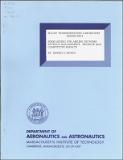| dc.contributor.author | Zickus, Jeffrey S. | en_US |
| dc.contributor.other | Massachusetts Institute of Technology. Flight Transportation Laboratory | en_US |
| dc.date.accessioned | 2012-01-06T22:51:37Z | |
| dc.date.available | 2012-01-06T22:51:37Z | |
| dc.date.issued | 1998 | en_US |
| dc.identifier | 663476228 | en_US |
| dc.identifier.uri | http://hdl.handle.net/1721.1/68154 | |
| dc.description | Includes bibliographical references (p. 137-138) | en_US |
| dc.description.abstract | Airline revenue management entails protecting enough seats for late-booking, high-fare passengers while still selling seats which would have otherwise gone empty at discounted fares to earlier-booking customers. In the evolution of revenue management to network origin-destination control, previous research has shown that revenue gains of some seat optimization algorithms can be much lower than others. One possible reason is the process by which demand estimates are generated; namely, forecasting and detruncation. Forecasting is used to estimate passenger demand based on historical flight data, while detruncation makes projections of what demand would have been in cases where the historical data has been constrained by a capacity limitation. This thesis explores the question of the interaction between forecasting methods, detruncation methods, and seat optimization algorithms on a simulated airline network, using the Passenger Origin-Destination Simulator (PODS) revenue management simulation tool, which models a network environment with two competing airlines. Changes in the forecasting and detruncation methods in combination with the seat optimization algorithms were tested in order to see what revenue impacts resulted. Additionally, passenger loads, forecasts, and fare class availability were examined to understand the reasons behind the observed revenue results. The simulations showed that seat optimizers which had relatively poor performance using a standard forecasting and detruncation method had substantial revenue increases when different forecasting and detruncation combinations were implemented. The results also indicate that the better combination of forecasting and detruncation causes higher revenues for all seat optimization methods tested, as a better passenger mix is realized due to higher levels of detruncation and more accurate forecasts. However, the sensitivity of the seat optimizers to the forecasting and detruncation methods remains mixed. Inferior detruncation (or forecasting) methods on a network can offset the revenue gains resulting from improvement to origin-destination control from leg-based control for some seat optimization algorithms. | en_US |
| dc.format.extent | 138 p | en_US |
| dc.publisher | Cambridge, Mass. : Massachusetts Institute of Technology, Dept. of Aeronautics and Astronautics, Flight Transportation Laboratory, [1998] | en_US |
| dc.relation.ispartofseries | FTL report (Massachusetts Institute of Technology. Flight Transportation Laboratory) ; R98-4 | en_US |
| dc.subject | Airlines | en_US |
| dc.subject | Revenue management | en_US |
| dc.subject | Management | en_US |
| dc.title | Forecasting for airline network revenue management : revenue and competitive impacts | en_US |
| dc.type | Technical Report | en_US |
